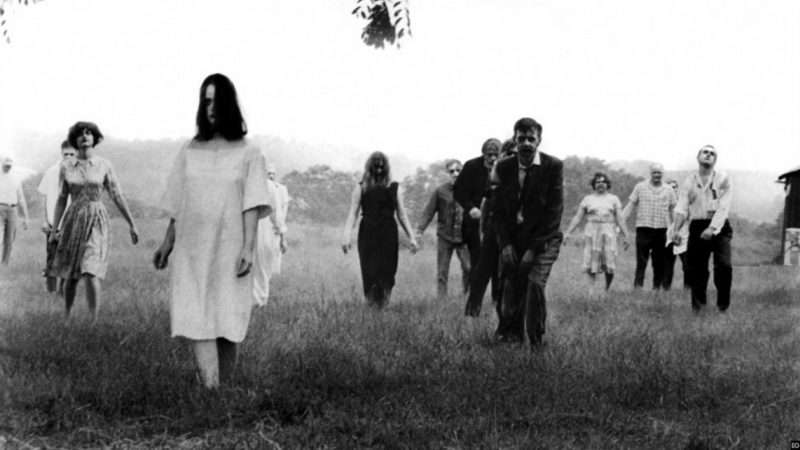Please enjoy the latest edition of Short Circuit, a weekly feature from the Institute for Justice.
New on the Short Circuit podcast: A whole lot of election law cases.
- Prospective immigrants to the U.S. get a leg up if they plan to invest $500k to build a business in certain targeted areas. If their investment takes the form of indebtedness, however, it only counts if the debt is secured by their personal assets. So what happens if they invest the proceeds of a loan? Is that cash or indebtedness? D.C. Circuit: If you buy a car with money the bank loaned you, you give cash to the car dealer, who doesn’t care where you got it. Same thing here.
- SCOTUS (June 2020): A state cannot exclude schools from a student-aid program because they are religious. First Circuit (October 2020): Well, sure, but a state can exclude schools because they do religious things. (This is an IJ case.)
- Connecticut class clown is asked to write a blog post answering open-ended questions about how characters in a video interacted with each other as part of a communications class. Instead, he writes a post ridiculing the assignment, which the instructor took down. So, like any normal person, the student files a pro se lawsuit alleging a violation of his First Amendment rights. Second Circuit: There’s no First Amendment right to not do your homework. Concurrence: I disagree with all of the legal reasoning the majority employs, but it doesn’t matter because Qualified Immunity.
- Apparently swapping porno mags and putting up naughty screensavers and loudly moaning while describing sexual fantasies about your co-workers at work is a no-no. So says the Second Circuit in this decision reinstating a jury verdict in a Title VII case brought by a retired Ulster County, N.Y. prison employee against her former employer.
- Houston law requires that all who circulate petitions to get measures on the ballot must be Houston voters. Oops, the Supreme Court held that unconstitutional 20 years ago. Is this “zombie” law sufficiently alive to pose a threat to First Amendment rights? Fifth Circuit: Indeed it is. The petition form still lists the requirement, and the city seems to have enforced it in the intervening years. The plaintiffs have standing.
- Customs officials have authority to search vehicles at the border without any probable cause. But what about reaching into a vehicle, grabbing the occupant, and then putting him in cuffs by the side of the road? Do officials need probable cause for that? Fifth Circuit: Nah.
- Allegation: Louisiana corrections employee deliberately keeps inmate imprisoned 60 days past his release date. (Allegedly, the employee announced that “if someone keeps bothering me about their computations they can do more time.”) Fifth Circuit: No qualified immunity for that fellow. But the fellow’s supervisor is off the hook; he might’ve known that his employees were “incompetent” at calculating sentences, but there is no allegation he knew that employees were miscalculating sentences on purpose. (Nor can a separate prisoner, allegedly held 52 days past his release date, sue supervisors at a separate jail.)
- Pro-First Amendment group challenges University of Texas at Austin campus speech code, alleging that its vague terms chill protected speech. University: What? We would never apply this code to speech that was protected by the First Amendment. Fifth Circuit: Query, then, why your speech code doesn’t simply say that students will be disciplined for speech outside the protection of the First Amendment (and, perhaps, Title IX).
- Lawyer: How would you rate my client as a businessman? Witness: Excellent. District Court: OK, now the government can admit tapes of your client making racist jokes about Cleveland Browns fans, since a good businessman would never say those sorts of things. Sixth Circuit: That’s not how this works.
- In a fact pattern that should be familiar by now, public transit system bans “political” advertisements from its busses. Sixth Circuit: We previously upheld Detroit transit’s ad ban on appeal from a preliminary injunction, but the Supreme Court has issued a few opinions in the meantime. Now we see that “political” is way too indeterminate a line on which to regulate speech, and in practice appears to just mean “controversial.”
- By law, Indiana election polls are open from 6am to 6pm on election day. Last year, the state passed laws restricting the ability of officials to extend the hours of the polls. District court: sure might disenfranchise voters, so those laws are enjoined for this election. Seventh Circuit: Not so fast. The possibility that “unforeseen circumstances on election day could disenfranchise voters unless they obtain an extension of polling hours” won’t cut it. The laws don’t burden the right to vote, and the injunction is stayed.
- Minnesota law provides that only those absentee ballots received by election day may be counted. A group sues in state court, and state election officials agree to count all ballots received up to a week after election day. Which likely violates the Electors Clause, says two-thirds of this Eighth Circuit panel. Only the state legislature has the authority to establish how a presidential election may be conducted.
- Kansas City, Mo. police arrest a 15-year-old walking home from his cousin’s house, hold him for three weeks, believing that he had fled police with a gun. One problem: it wasn’t him. Though both were black, the teen they arrested was 5 inches taller and had different clothes and different hair than the suspect. And they found him a mile away seven minutes later, breathing normally and “only a little sweaty” despite the 86-degree heat. District court: The police could’ve reasonably believed they were the same. Eighth Circuit, over a dissent: No, they could not have. No qualified immunity.
- Following the Supreme Court’s 2019 decision overruling the long-dreaded Williamson County doctrine—under which takings claims had to first be litigated in state court—landowner files takings claim in federal court. Ninth Circuit: OK, now we need not consider a property owner’s takings claim because of Pullman abstention. (More on that from a friend of the round-up.)
- Man is arrested for public intoxication and taken to the Muskogee County, Okla. jail. He becomes uncooperative, and while escorting the man to a restraint chair, an officer applies “forward pressure to [his] right arm,” causing the man to fall, suffer an acute subdural hematoma, and die. Excessive force? Tenth Circuit: The officer’s use of modest forward pressure was reasonable.
- In which the Tenth Circuit deep-dives into Urban Dictionary, scrolls through 38 pages of the website’s entry for “dab,” and hits gold on page 39. Among the dictionary’s many definitions of “dab” (after “to touch one’s foot to the ground while bicycling” and “[a] battered potato” but before “when kids want to show off that there [sic] balls haven’t dropped yet“) is this: “a single ‘hit or toke from rolled marijuana.'” So ::insert legal analysis of false arrest claim:: no qualified immunity!
- The Netflix original series Narcos chronicles the rise and fall of notorious drug kingpin Pablo Escobar. But does it also infringe the copyright of Virginia Vallejo—a well-known Colombian journalist who wrote a memoir of her romantic affair with the richest criminal in history—who alleges that the show stole two scenes from her book (one of which made your editor blush)? Eleventh Circuit: The memoir purports to be a true story, and copyright doesn’t protect facts.
- After tentatively settling a class action alleging that Godiva Chocolates violated federal law by including too many credit card numerals on its receipts, the chocolatier catches a lucky break: The en banc Eleventh Circuit (over three lengthy dissents) throws out the case on standing grounds, concluding that this “bare procedural violation” is not sufficient to cause an injury under the Supreme Court’s ruling in Spokeo, Inc. v. Robins, which was decided after settlement but before the class fairness hearing.
In 2019, Nebraska joined the vast majority of states across the country by passing LB 304, which exempted home bakers from the state’s commercial kitchen inspection and licensing requirements. That includes home bakers like IJ client Cindy Harper, who was excited about the prospect of selling her delicious sugar cookies to friends in Lincoln. But earlier this year, Lincoln went rogue and unveiled local ordinances designed to reimpose the very inspection and licensing requirements the state legislature repealed. Undeterred, Cindy fought back, and with IJ’s help filed a lawsuit against Lincoln, arguing that the ordinances were preempted by state law. Just this week, she obtained a favorable state court ruling allowing her lawsuit to move forward. Click here to learn more about Cindy’s case.
from Latest – Reason.com https://ift.tt/3oGQClj
via IFTTT


